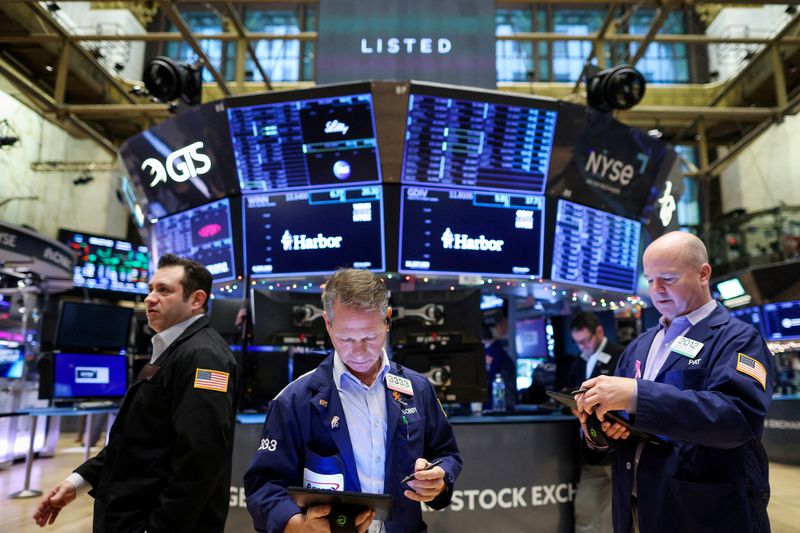Slowing inflation is reason for stock market rally
2023.01.12 15:59

Slowing inflation is reason for stock market rally
By Ray Johnson
Budrigannews.com – A slowdown in U.S. inflation last month, according to some investors, may have opened the door to a market-friendly “Goldilocks” scenario for asset prices, allowing the Federal Reserve to reduce consumer prices without seriously affecting growth.
Data released on Thursday indicated that inflation was on a sustained downward trend despite relatively robust growth in other economic indicators such as employment, as consumer prices in the United States unexpectedly fell last month for the first time in more than two and a half years.
Theoretically, the scenario could support the case for the U.S. central bank to ease off market-shaking rate increases sooner than anticipated to avoid a widely anticipated recession, which many feared would further harm the stock market after the steep decline it experienced last year.
Ipek Ozkardeskaya, a senior analyst at Swissquote Bank, stated, “Softer inflation and (the) strong jobs market do support the Goldilocks scenario, which will certainly make the rate hike discussion heated at the heart of the FOMC (Federal Open Market Committee).”
The Federal Reserve has given few indications that it intends to alter the course that policymakers established last year. They anticipated that their key policy rate would reach its maximum of 5.0%-5.25 percent this year, up from its current range of 4.5%-4.50%.
The policy rate peaked below 5% in mid-June before falling in the second half of the year, indicating that investors continue to hold a more dovish view.
Expectations that the Fed would slow down the pace of its rate increases once more during its January 31-February meeting were strengthened by Thursday’s data for the immediate future. 1 meeting on policy.
According to CME Group’s (NASDAQ:), investors are now pricing in roughly a 90 percent chance that the central bank will raise its policy rate by 25 basis points to a range of 4.50 percent to 4.75 percent at that meeting. This is up from about a 75 percent chance priced in on Wednesday and the 35 percent chance expected a month ago. FedWatch Software Starting in June 2022, the Federal Reserve increased interest rates by three-quarters of a percentage point at four consecutive meetings before easing to a half-percentage-point increase at its most recent meeting.
Rick Rieder, chief investment officer of global fixed income at BlackRock (NYSE:), stated, “I think it’s now clear that the aggressive single-meeting moves are behind us.” referring to the Fed’s recent series of increases of 50 and 75 basis points.
Based on data, Rieder predicts that policymakers will raise rates by 25 basis points at the next two meetings. Additional 25 basis point increases are also possible.
On Thursday, stock movements were less significant than the significant swings that have occurred in recent months regarding the release dates of consumer price data. The was up about 0.3 percent, and the benchmark 10-year Treasury yield was around 3.44%, which was down about 11 basis points.
According to data provided by market maker Optiver, investors in short-term options had priced in a much sharper move of approximately 2% prior to Thursday’s CPI print. The S&P 500 moved in either direction an average of 2.7% on the days of the previous seven CPI releases, more than double the average daily move of about 1.2% over the same time period.
Hugo Bernaldo, senior cross-asset trader at market maker Optiver in Amsterdam, stated, “This was the first in-line CPI print in a long time and the first print in six months where it was not profitable to be ‘long volatility.'” That might prompt the market to reconsider these in the future.”
According to Charlie McElligott, equity derivatives strategist at Nomura, stocks are up 3% month-to-date, which may have contributed to the session’s muted reaction.
According to McElligott, “It was a bullish story, but we had traded up into it anticipating it…” and “that compressed the actual post-event trade.”
He stated, “There have been a number of discretionary, macro, and tactical people who had this disinflation Goldilocks kind of risk trade on to start the year.”
PIMCO’s North American economist Tiffany Wilding believes that the Fed will likely raise rates just twice more this year before pausing.
She stated that they “still need to keep policy in restrictive levels, but in terms of the likelihood of needing to go much higher from here, I think that definitely is falling by the day as we’re getting more good news on the inflation data.” She added that they “still need to keep policy in restrictive levels.”
More Ghana raises salaries of civil servants despite economic problems








